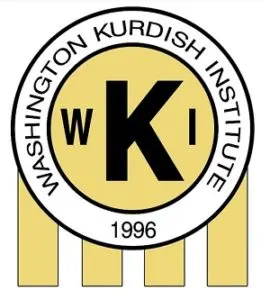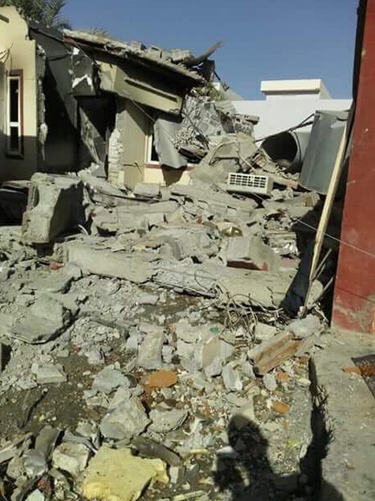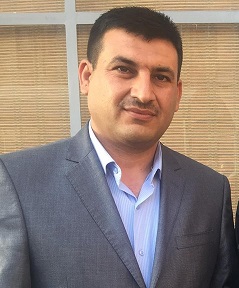Washington Kurdish Institute
December 19, 2017
After Iranian-backed militias attacked the disputed territories between Iraq’s central Government and the Kurdistan Regional Government (KRG), life in the town of Tuz Khormato has changed for the worst.
Tuz is a small town south of Kirkuk city. Historically Tuz inhabitants were Kurds. Alongside the majority Kurds, minorities like Turkmen and Arabs also lived there. The Turkmen migrated to Tuz during the Ottoman era, when the empire controlled Iraq; meanwhile Arab migration to the town grew after the creation of the modern Iraqi state, initiating the first in many Arabization campaigns against the local Kurdish population.
Similar to other Kurdish areas in Iraq, Tuz for many decades suffered governmentally enforced demographic changes. For example on January 19, 1976, the ruling al Ba’ath regime issued Republican Decree 41 that removed the Tuz district from Kirkuk governorate and allocated it to the Salahuddin province instead. This move was an attempt to change the demography of both Tuz and Kirkuk province.
In 2003, after the overthrow of the Saddam Hussein regime, the U.S-led coalition stationed a large base in Tuz because the town lays between a strategic axis that connects three unstable provinces. In 2005, with the adoption of Iraq’s current constitution, Article 140 called for the normalization and restoration of Kirkuk Province’s borders (including Tuz and other disputed territories). However after 14 years, the Iraqi government has yet to make any progress towards enacting this article of the constitution, and, in fact, often openly works against fulfilling this constitutional promise.
After many years of terror attacks and Sunni-Shia infighting, Tuz became a target for the terrorist organization the Islamic State of Iraq and Syria (ISIS). On July 11, 2014, three days after the fall of Mosul, the Iraqi army lost Tikrit city, in Selahaddin Province, to ISIS. Soon after the terror organization was on the verge of taking Tuz but the Peshmerga forces quickly mobilized some forces to successfully protect the town. However, Tuz changed dramatically when the Iraqi government decided to attack the disputed areas on October 16, 2017. The Iraqi army and Iranian-backed militias took over the town and the Peshmerga forces withdrew to avoid bloodshed. Soon after the militias took over the town, ethnic cleansing started against the Kurdish residents. Hundreds of houses and stores owned by Kurds were burned to the ground. While the latest documented video evidence shows the destruction in the Kurdish areas by the Iranian-backed militias, the Iraqi government still remains silent — a silence that only serves to imply consent and blessing towards these egregious acts. Tuz displaced Kurdish families are now in the Kurdistan Provinces of Erbil and Sulaymaniyah, and other villages near Tuz under KRG control. The estimated number of Internally Displaced People (IDP) is currently 50,000, with many suffering in the cold winter and hoping to someday return to their homes.
“Kurdish markets, homes, businesses, and factories all have been destroyed by the the Shia militias of the Popular mobilization Units (PMU) [Hashad Al Shabii],” one displaced Tuz resident, Rizgar Ibrahim, told the Washington Kurdish Institute. Ibrahim, a Kurdish humanitarian activist, is currently in Sulaymaniyah with his family as an IDP.
Ibrahim accused Turkmen Shia militia components of the PMUs for conducting the attacks.
“Most of the Turkmen Shias are part of Asa’ib Ahl al-Haq, Al Bader, and Imam Ali brigades militias,” Ibrahim said.
Asa’ib Ahl al-Haq and Al Bader organizations were formed, and continue to be armed and trained, by the Iranian government. Both organizations are involved in sectarian crimes in Iraq and have also targeted the U.S.-led coalition in insurgent attacks.
“There are no Kurds left in the town,” said Ibrahim. “The only Kurds in Tuz are 10-20 government employees who return to Kurdish controlled areas in the nights after working during the day there [in Tuz] in order to keep their jobs”.
According to Ibrahim, the Kurds are afraid to return because fear the militias will enact ethno-sectarian attacks against the Kurds, much like they did against the Sunni Arab populations of Iraq after 2003.
“Without Iraqi government guarantees, no one is willing to return,” Ibrahim said. “387 Sunnis killed bodies have been found since 2014 in the town and the entire Sunni population have fled.”
The Iraqi government has not been able to control these Iranian-backed militias since 2003. Thousands of Sunnis were killed by the militias and death squads in Baghdad after 2003. The Sunni-dominated terror operations led these Shia militias to retaliate by targeting Sunni civilians, especially in areas with mixed populations. Tuz is a district that includes sub-districts like Sulaiman Bek, which once was a majority Sunni area. However after ISIS took over the town, the Iraqi army and Shia militias were able to retake the town but prevented the Sunnis from returning.
“There are 41 Sunni villages by Sulaiman Bek and no one is allowed to return to their homes,” Ibrahim explained. “The Kurds, the Sunni Arabs, and Sunni Turkmen are all displaced by the militias. The only people left are the Shia Turkmen.”
The displacement of the Kurdish population started soon after Iraq’s Prime Minister Haider al Abadi mobilized the Shia, Iranian-backed militias to Tuz. For example, in one of the Kurdish neighborhoods of Hay al Askari, about 1500 Kurds were forces to leave their home before October 16.
The United Nations Assistance Mission for Iraq (UNAMI) reported that “at least 150 houses belonging to Turkmen and Kurds were reportedly set ablaze and there were other reports of acts of violence,” adding that “the United Nations expressed concern about the clashes in the town which have inflicted casualties, and triggered a new wave of displacements primarily from the Kurdish community.”
The Kurdistan Regional Parliament considers what took place in Tuz as a genocide committed against the Kurds. As the Peshmerga forces left the town, a significant security vacuum has emerged.
The remaining ISIS fighters have rebranded their group under the name of the “White Flags”. This group poses danger to the town and has launched several terrorist attacks since the Peshmerga left the town.
Ibrahim praised the role of the Peshmerga forces.
“There were no IDPs under the Pesmerga,” he said. “They were never inside the town but protecting it from the outside. They protected all of us and never bombed any houses like the militias did.”
Tuz’s local council is evenly divided among the main ethnic groups (Kurds, Arabs, and Turkmen), allocating 7 seats to each. Yet since the town’s takeover by the Iraqi government and Shia, Iranian-backed militias, the council has been disabled, with the Kurdish mayor ceasing work because of threats against him by the sectarian militias.
”There isn’t any solution between Baghdad and Erbil without solving the Tuz Khurmatu issue,” said Ibrahim. “Tuz is the gate to the Kurdistan region and the dispute with Baghdad starts from there. The Peshmerga forces didn’t want to shed blood. Therefore they chose not to fight the army and the militias since it would have ended in loss of civilians and more destruction to the town.”
The Kurdish neighborhoods in the city remain ghost towns while the Shia areas are bustling, with portraits of Iranian religious leaders all over.
“We hope dialogue and peace will prevail and we all will return to our homes,” said Ibrahim.
While Ibrahim remains hopeful for a peaceful solution to this conflict, the current situation seems less hopeful — Baghdad’s aggressions against the Kurds continue, Iran continues to successfully expand its influence and power in the region, and the international community continues to remain silent.
As Iran controls most of Iraq’s security forces, Tuz remains at the Iranian regime’s mercy. If Iran and its proxies’ actions since 2003 in other areas of the country are any indication of what the future brings for Tuz, the sad reality may be a future of cultural oppression, political imprisonment, and ethnic and sectarian killings.


